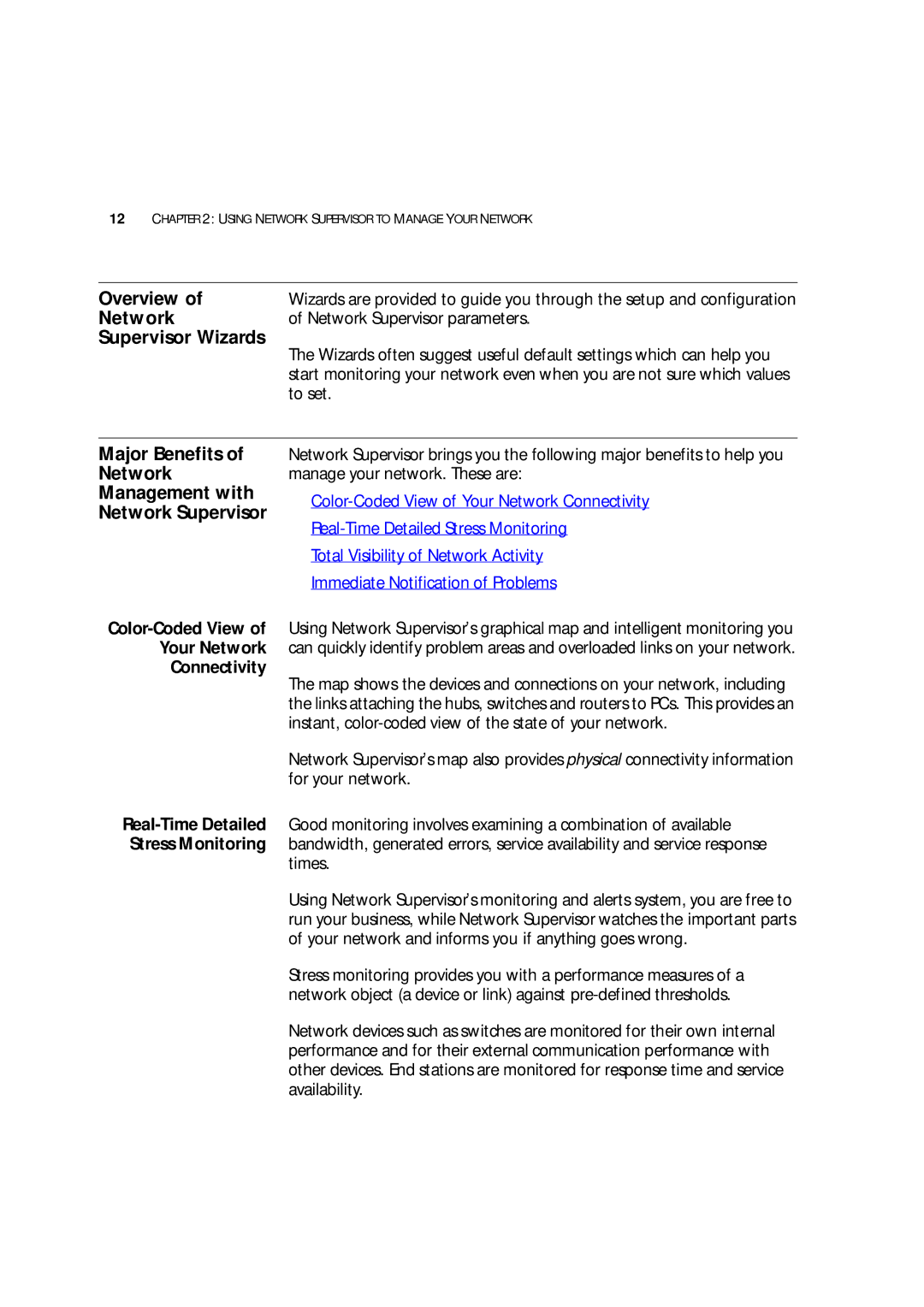12CHAPTER 2: USING NETWORK SUPERVISOR TO MANAGE YOUR NETWORK
Overview of | Wizards are provided to guide you through the setup and configuration | |
Network | of Network Supervisor parameters. | |
Supervisor Wizards | The Wizards often suggest useful default settings which can help you | |
| ||
| start monitoring your network even when you are not sure which values | |
| to set. | |
|
| |
Major Benefits of | Network Supervisor brings you the following major benefits to help you | |
Network | manage your network. These are: | |
Management with | ■ | |
Network Supervisor | ||
■ | ||
| ||
| ■ Total Visibility of Network Activity | |
| ■ Immediate Notification of Problems | |
Using Network Supervisor’s graphical map and intelligent monitoring you | ||
Your Network | can quickly identify problem areas and overloaded links on your network. | |
Connectivity | The map shows the devices and connections on your network, including | |
| ||
| the links attaching the hubs, switches and routers to PCs. This provides an | |
| instant, | |
| Network Supervisor’s map also provides physical connectivity information | |
| for your network. | |
Good monitoring involves examining a combination of available | ||
Stress Monitoring | bandwidth, generated errors, service availability and service response | |
| times. | |
| Using Network Supervisor’s monitoring and alerts system, you are free to | |
| run your business, while Network Supervisor watches the important parts | |
| of your network and informs you if anything goes wrong. | |
| Stress monitoring provides you with a performance measures of a | |
| network object (a device or link) against | |
| Network devices such as switches are monitored for their own internal | |
| performance and for their external communication performance with | |
| other devices. End stations are monitored for response time and service | |
| availability. |
